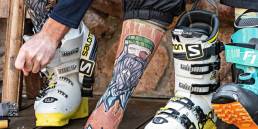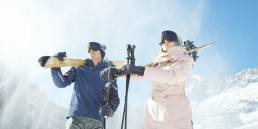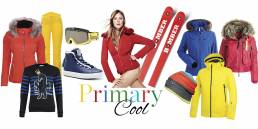Best Goggles 2015 – I Can See Clearly Now
2015 GOGGLES GO HIGH TECH
BY MEGAN BARBER
You’ve got a full day of steep vert ahead in a tantalizing combo of deep snow bowls, thick glades, and open, undulating drifts… but so far all of it’s covered in a soupy mist. Your weather app is promising sun by 11, showers at noon, and better visibility by 2—which combination of goggle lenses do you choose to accommodate these unpredictable weather shifts?
Goggles can make or break a ski day. Luckily for snow lovers, the 2014-2015 class of high-tech eyewear aims to make common irritations—cumbersome lens changes, lack of peripheral vision, inability to check weather updates—nuisances of the past.
TRANSITION LENSES
To start, goggles with transition lenses are storming this year’s eyewear market. To help their wearers avoid taking gloves off on freezing-cold chairlifts or MacGyver-like lens changes, several companies have developed a transitional one-lens-for-all. New this year in Dragon’s Advanced Projects X and XS models, for example, is a photochromic lens that features a yellow base color in low light conditions and a dark gray tint in full sun. Uvex also has a brandnew transition lens, the Snowstrike Variotronic, which uses LCD technology to instantly switch from light to dark. The photocell sensors can also be deactivated and switched to manual operation with just a click of a button.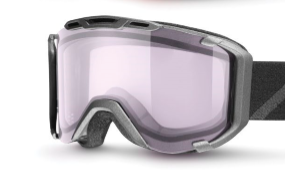
FIELD VISION IMPROVEMENTS
For the past few years, goggle innovation has been all about enhancing peripheral vision coupled with generating gorgeous eyewear that doesn’t fog. Rimless frames and wider lenses make it easier to see the whole mountain—whether it’s an out-of-control beginner or a perfect line through the aspens. Smith’s stylish new I/O7 has been sent from heaven. Not only do these goggles feature a wide field of vision and come protected with a heavy-duty antifog coating, its minimalist design also features a single-pivot, quick release lens that makes changes a snap. Smith delivers an astounding array of color options—15 in all—so even the most selective of gear aficionados can settle on one that suits. For something more unique, check out the brand new Guard goggle from the Swedish company Dr. Zipe. A handy frameless goggle that’s loaded with style, the Guard has a wide field of vision and a unique, sealed, double-ventilated lens to prevent clouding up.
HEADS UP
Skiers who love sporting the most cutting-edge gear on the mountain should consider goggles with heads up displays (HUD). For 2015, Recon Instruments has partnered with Oakley and Smith Optics on Recon Snow2—an unobtrusive screen inside the lens. Digital updates can include speed, navigation, vertical descent, altitude, weather, even incoming texts! These Oakley and Smith goggles can even be paired with a compatible Android or iOS device to track friends around the mountain. Although Recon Instruments has been working on HUD technology for a few years now, Snow2 has three times the processing power, a 35-percent increase in battery life, and an array of new apps and software upgrades. Check out Smith’s IO Recon or the Oakley Airwave 1.5 for stylish HUD goggles that still provide easy lens change capabilities.
GOOGLE-HELMET INTEGRATION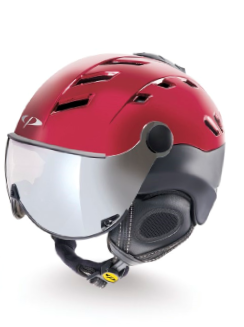
Skiers who hate the dreaded goggle “gaper gap” should consider CP, Kask, and OSBE as forerunners in goggle-free helmets. This winter OSBE is launching the Bellagio, a helmet with a built-in visor that folds away and comes in seven different colors. Like the idea of an integrated system but still want the look of goggles during après-ski? Skiers can also pull the visor up and rest it on top of the helmet. With designs this good we’re sure to see a proliferation of similar products in skiing’s near future. Not ready to go “goggle-free?” Try perfectly fitting helmet- goggle combos from POC, such as its special edition Iris X goggle coupled with the J. Jones Fornix Backcountry MIPS helmet.
WHERE WILL GOGGLES LEAD US NEXT?
All of these advances beg the question: Where will goggles head next? These days, there’s an app for just about everything so it’s no surprise goggle tech is going high-tech. Industry experts predict an increase in “smart goggle” technology—it’s a sure bet we’ll see more heads-up displays, built-in cameras, and GPS navigation. And while this means that ski goggles could get more expensive, it seems worth the price. Smart goggles of the future could tell us how to get to that secret powder stash, take photos and video once we find it, and automatically share our adventures online with our friends. All that combined with new lenses that help us see better and make the mountains look more beautiful than ever before? You bet.


